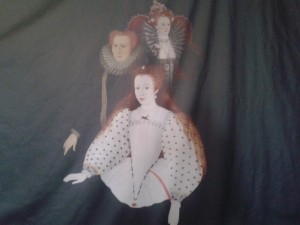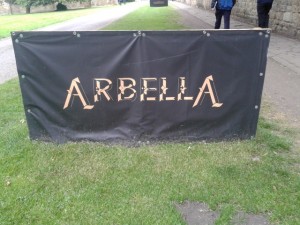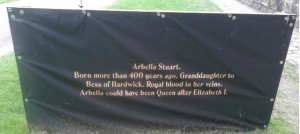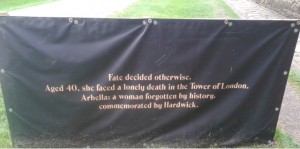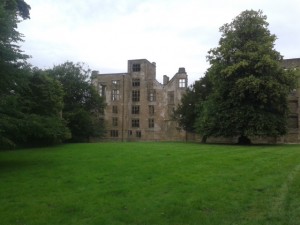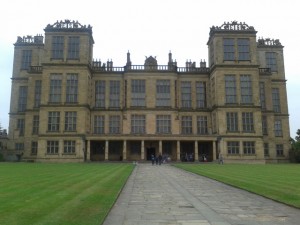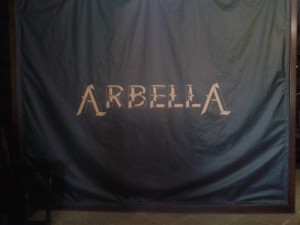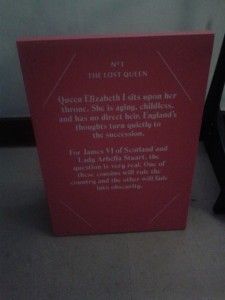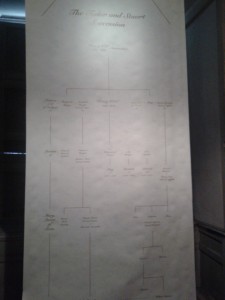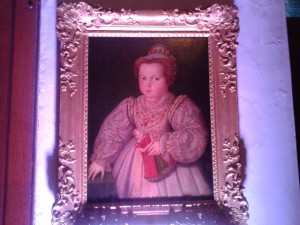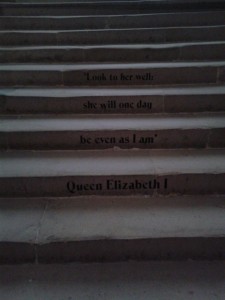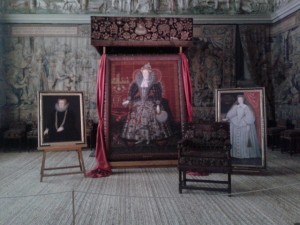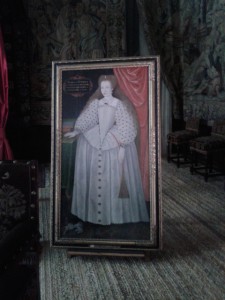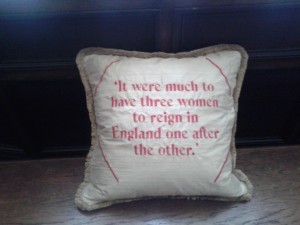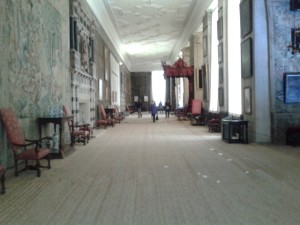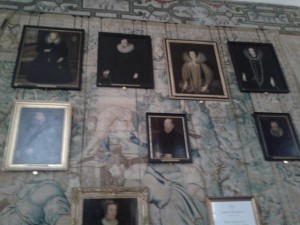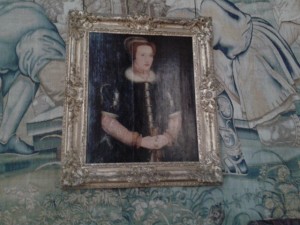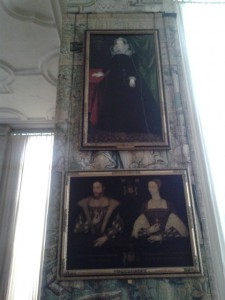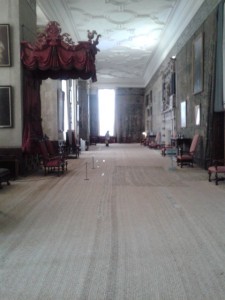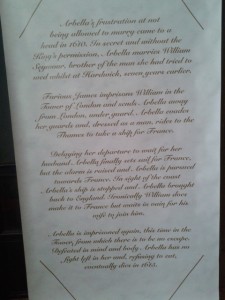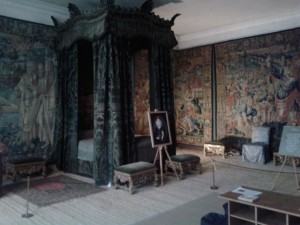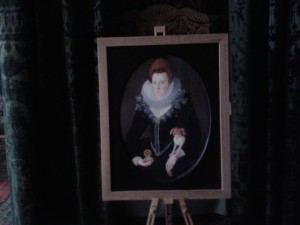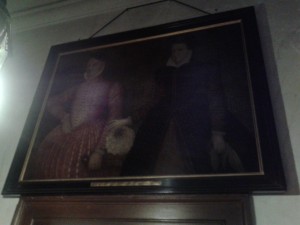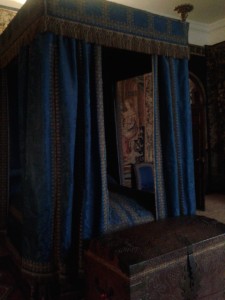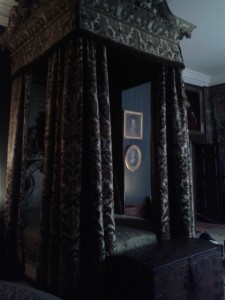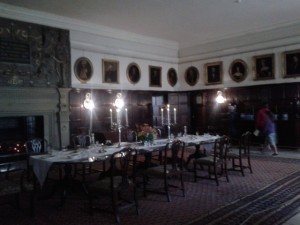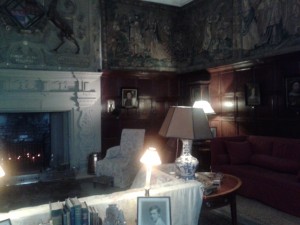I first became became aware of Arbella Stuart through her connection to the Grey family. However, Arbella turned out to be fascinating in her own right and ever since I read ‘Arbella: England’s Lost Queen’ by Sarah Gristwood, I have wanted to visit Hardwick Hall.
This summer was the perfect time to visit as the Hall is running an exhibition about Arbella to mark the 400th anniversary of her death on 25th September 1615.
Arbella had a claim to the throne of England through her father, Charles Stuart. Arbella was the great-granddaughter of Margaret Tudor, cousin to James VI of Scotland and niece of Mary Queen of Scots.
However, it is Arbella’s maternal grandmother who links her to Hardwick. Arbella was the grand-daughter of Bess of Hardwick and lived with her, after the early deaths of her parents.
‘Bess was born at Hardwick in about 1527…The Hardwicks were minor gentry who had been established at Hardwick for at least six generations. They owned a few hundred acres and lived in a small manor house on the site of Hardwick Old Hall.’ (1)
After the breakdown of her fourth and final marriage, Bess bought the house and land from her brother James. ‘Between about 1585 and 1590 (Bess) enlarged and remodelled the old house to become what is now known as Hardwick Old Hall.’ (2)
In 1590, Bess’s husband, Lord Shrewsbury, died. It was then that ‘she laid out the foundations of a new, larger and grander house a few yards away from the still uncompleted Hardwick Old Hall….The next thirteen years were spent in building and furnishing Hardwick…’ (3)
‘Various means were used to obtain complete all-round symmetry at Hardwick, and yet provide the rooms of all shapes and sizes that were needed. A few windows are completely false and have chimneypieces behind them.’ (4)
‘The portrait of Arbella Stuart as a toddler…is surely too idiosyncratic not to have been painted from life.’ (5)
‘To Madame de Chateauneaf, wife of the French Ambassador, Elizabeth made a calculatedly tantalizing remark…the queen said ‘Look to her well: she will one day be as I am and a lady mistress. But I will have gone before.’ (6)
The High Great Chamber
‘This is the most undilutedly Elizabethan room in Hardwick, and the most magnificent.’ (7)
‘What was Bess aiming at?…Elizabeth splendidly received and feted at Hardwick. Arbella declared her heir, further royal visits and the subsequent glorification of the Cavendish family – something like this may lie behind the great echoing rooms at Hardwick, waiting, as it turned out, for a Queen who never came, and a royal succession which never materialised.’ (8)
The Long Gallery
‘Measuring 51 metres long, 8 metres high and varying from 6.7 to 12 metres in width, the Hardwick Gallery is the largest (although not the longest) of surviving Elizabethan long galleries, and the only one to retain both its original tapestries and many of its original pictures.’ (9)
According to the 1601 inventory of Hardwick, ‘It was sparsely furnished with two square inlaid tables, covered with carpets, three chairs, three low stools, a footstool, two forms, two mirrors, a little ivory table and a fire-screen. In each window was a window seat furnished with a richly embroidered cushion.’ (10)
It was in the gallery that Bess and Arbella were walking when a messenger arrived from court in January 1603.
Sarah Gristwood writes, ‘The scene bore a brief, transitory resemblance to that which had been enacted at Hatfield some forty years before, when the messenger came to tell the then princess Elizabeth that she was queen.’
The Green Velvet Room
The Lobby between the blue room and the north staircase
The Blue Room
The Cut-Velvet Bedroom
The Dining Room
The Drawing Room
Sources
1. National Trust. (2006) Hardwick Hall, Park Lane Press, p.44
2. Ibid p.47
3. Ibid p.48
4. Ibid p.53
5. Gristwood, Sarah. (2004) Arbella: England’s Lost Queen, Bantam, p.46
6. Ibid p.99-100
7. National Trust. (2006) Hardwick Hall, Park Lane Press, p.12
8. Ibid p.13
9. Ibid p.16
10. Ibid.
11. Gristwood, Sarah. (2004) Arbella: England’s Lost Queen, Bantam, p.182

